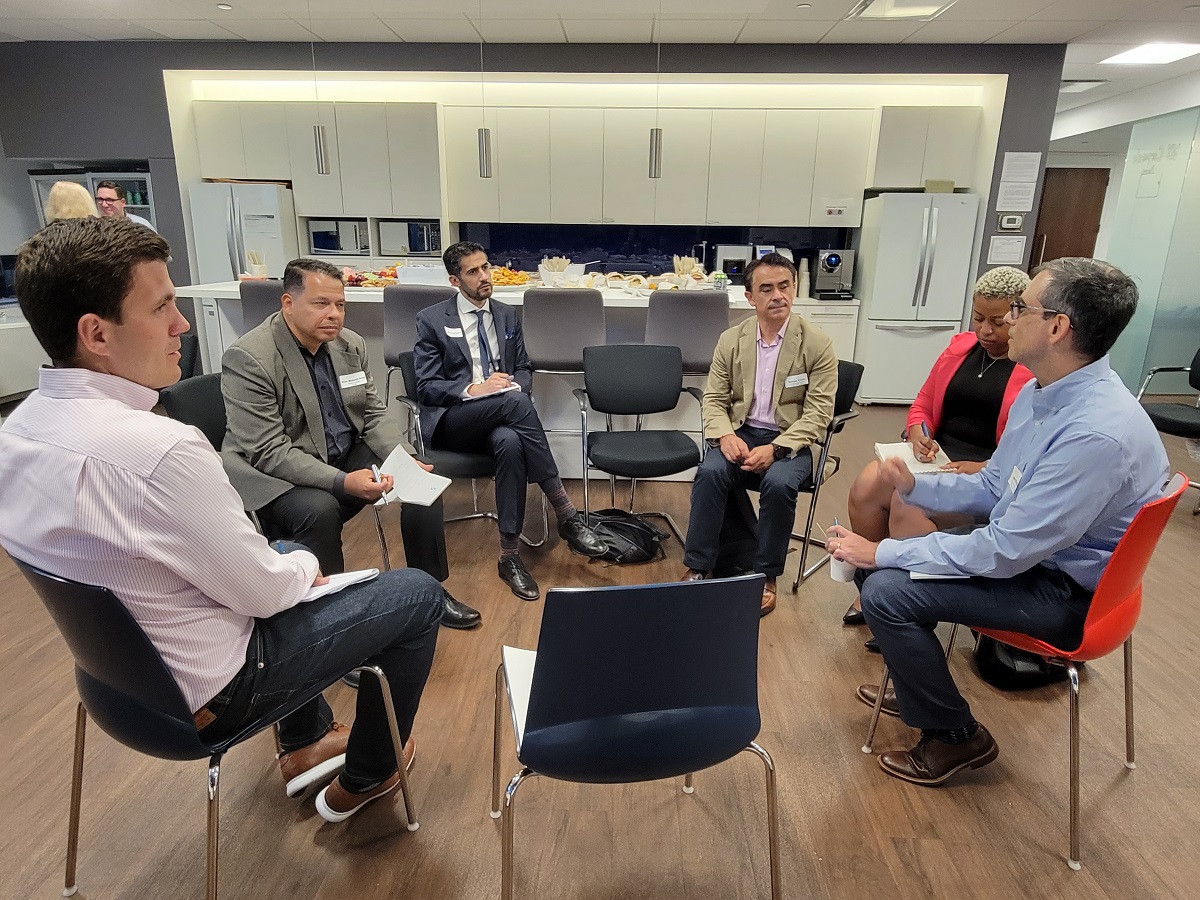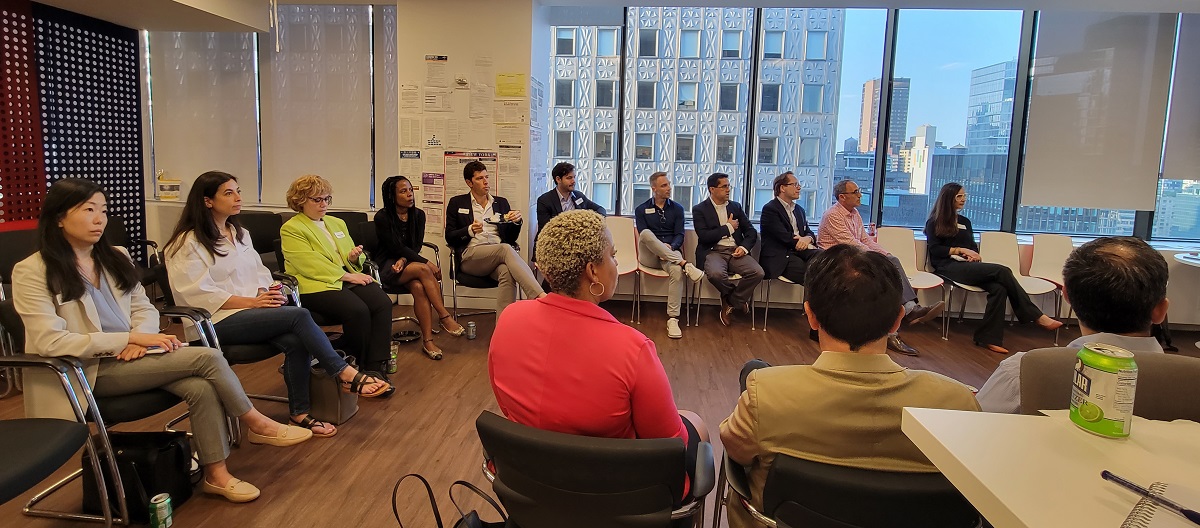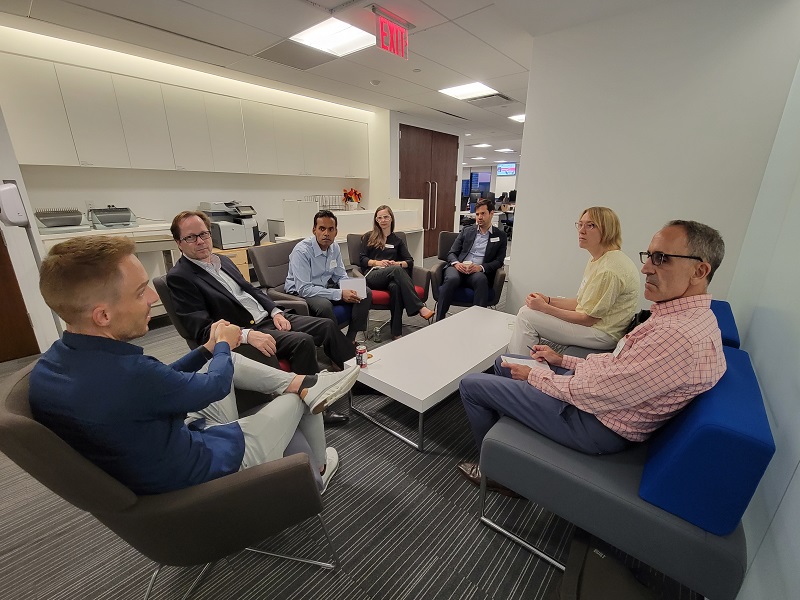Fortunately, an increasing number of organisations have come to embrace what IFP&A can offer. These people...
After a 2-year Covid-related break, FP&A Trends resumed a series of live events in the United States. New York welcomed senior FP&A practitioners on June 15th. Representatives from various industries, including finance, manufacturing, technology, consumer goods, real estate etc., gathered to share the lessons learnt from the pandemic.

Figure 1: Small Group Work During the New York FP&A Board on the 16th of June, 2022
The first question raised was – What have we done more than ever?
Participants discussed their experiences and how they had to learn to adapt on the go during this unprecedented “black swan” event.
The second question that followed was – What was your biggest FP&A lesson learnt from this experience? The answers can be summarized into these categories:
- Utilizing Business Intelligence, taking full advantage of digital tools and widely implementing technology changes
- Planning, planning, planning and again… planning
- Enhanced emphasis on collaboration, strong productive culture, and strong support
- Building agile Cash Flow models and effective cash management
- Being creative – leveraging different sources of data as well as utilising better data management
- Hedging, diversification, contingency planning, and constant forecasting
- Learning to operate in a fully virtual setting while still maintaining or enhancing productivity
- Approaches to strategic and operational planning
- Adaptability to constant adjustment to the forecast, which was never needed before
FP&A leaders discussed that it was evident that traditional FP&A approaches were not working anymore, as the development of this function required new approaches to both data and talent. The span of predictability is consistently decreasing for companies, and it is no longer realistic to have just one plan or one scenario – the global pandemic crisis taught us all that. We now need to continuously scan the environment for new threats and new opportunities.

Figure 2: The New York FP&A Board Members
Participants shared their experiences with Scenario Planning when old algorithms had to be thrown away and new ways needed to be developed rather quickly. The word “agility” was heard repeatedly. There was a clear understanding among FP&A leaders that we need to step away from traditional approaches to P&L as they were not working during the pandemic. Companies had to adapt fast: for instance, some companies had to move from annual pricing to weekly price adjustments. Such dramatic shortening of the cycle required constant adaptation through the development of new and creative means to find relevant information and analyse it rather quickly.
How Do We Manage Uncertainty Now?
We can only manage it through efficient scenario management, reliance on different models, and increased frequency of analysis – all of which is a much heavier lift for teams but are still very important to implement. The FP&A leader from the real estate industry shared that during the pandemic, they had to hire an economist to attempt to predict the market in challenging times. The whole mindset of the company had to change. The emphasis was even greater now to understand the key drivers thoroughly and to plan around those realistic drivers making FP&A a helpful partner to risk management due to fantastic models that could now also be used for risk analysis.
Another leader shared how he was surprised that it took them only three months to go from outdated systems and quarterly forecasting to successfully utilizing the best-in-class BI tools and a weekly continuous forecasting cycle.
FP&A Trends also shared a global survey, where only 11% of companies reported considering themselves to be best in class, multidimensional and agile. Participants discussed the importance of not being caught in a false sense of precision and utilizing a Pareto principle where 20% of targeted efforts drive 80% of the results that matter.
The second part of the evening was highlighted by the presentation by Alessandro Cardito, North America Brand Finance Director at Diageo.
Alessandro shared with the participants his main lessons from navigating the pandemic, including the business intelligence tools. You can start implementing them in only a few hours and ways to help you “never waste a good crisis” – his most important lesson during the pandemic. During the presentation, Alessandro also touched on the xP&A concept where the FP&A function can’t forecast on its own as we all need input from both internal and external stakeholders. It is a new environment, and we need to adapt.
Towards the end of the evening, participants touched on both the new critical rules and new critical roles in FP&A. They discussed the new roles emerging, the roles in the digitalisation of finance and how companies struggle to find talent on the verge of finance and technology. Participants shared how they now hire data scientists and teach them to finance to meet their current business needs. Data is the key in FP&A and effectively managing more and more data becomes paramount for both agility and efficiency.
Larysa shared the results of the survey with the group about an analytical transformation and best-in-class scenario management based on online participation from FP&A leaders around the world.
At the end of the meeting, participants split into 3 groups to go in-depth into discussions of these three FP&A questions:
- What are the practical steps toward the implementation of xP&A?
- How can we move from traditional planning to scenario management?
- How can organisations prepare themselves for successful analytical transformation?

Figure 3: Attendees of the New York FP&A Board Had Lively Discussions
When the conclusions were later shared with the whole group, participants underscored the challenges of both smaller companies (the process is much clearer, but resources can be scarce) and bigger companies (more resources but a potential to operate in silos, as well as the challenges of effective communication between various departments).
Conclusion
A lot of important areas were covered during this first post-Covid live event in New York. The challenges of this major “black swan” of the decade were thoroughly discussed, as well as the lessons learnt about ways to effectively manage uncertainty and the adaptation of FP&A to a new reality.
We are very grateful to our global sponsors and partners SAP and Michael Page for their great support.
Subscribe to
FP&A Trends Digest

We will regularly update you on the latest trends and developments in FP&A. Take the opportunity to have articles written by finance thought leaders delivered directly to your inbox; watch compelling webinars; connect with like-minded professionals; and become a part of our global community.




